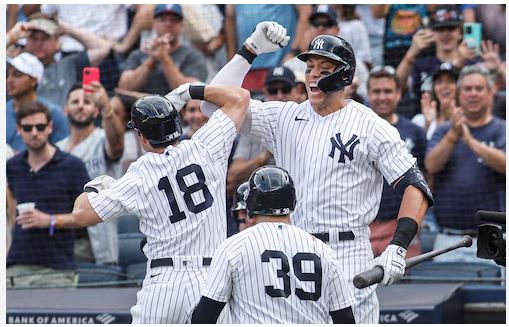A herniation happens when the inner, more fluid section of the intervertebral disc protrudes outward, either against or through the outer, more dense rings of cartilage. It typically manifests as back spasms when the lumbar muscle tightens to “protect” the wounded tissue. Naturally, Brooks Lee’s back spasms were initially identified when he was benched to start the minor league season.
The most frequent cause of acute (or “instantaneous”) herniation is the spine’s violent rotation combined with an axial strain. It is no accident that a baseball swing is used to illustrate “the forceful rotation of the spine in combination with an axial load” in textbooks. Should the herniation be sufficiently significant, it may compress adjacent nerves or even the spinal cord, resulting in leg numbness, tingling, and weakness.
.jpg.7948cbe394b25b814a0a93a3d04fbcb3.jpg)
As alarming as that may sound, disc herniations are incredibly frequent and usually go away on their own without the need for surgery. Previous studies have estimated that up to 30–40% of elite athletes—depending on their sport—may have lower back disc herniations without any symptoms. Professional baseball players who experience symptoms (pain, numbness, tingling, etc.) had a virtually 100% return-to-play record; those who eventually had surgery recovered in an average of eight months, while those who did not recovered in six.
Lee is almost halfway through an eight-week rehabilitation program directed by leading back specialist Dr. Robert Watkins in the United States, according to Gleeman. According to current best practices, before considering surgery, athletes should complete about eight weeks of rehabilitation with an emphasis on strengthening their lower back and core while minimizing nerve irritation. (Athletes frequently additionally receive an injection of cortisone, which lessens inflammation of the nerve and surrounding tissue.)
The majority of disc herniation symptoms go away in the time range mentioned above. Despite what the general public believes, disc herniations—especially those that are very small—can be reabsorbed by the body and repair themselves. Microdiscectomy surgery, which removes the disc, is considered a last resort because the chances of re-herniation are higher and its success rate is comparable to that of conservative treatments.
Disc herniations are thought to be a serious injury that can change a person’s career and perhaps end it, but the evidence reveals that this isn’t always the case.

Although Lee’s disc herniation diagnosis is by no means good news, there is no need to panic, as the research indicates.



